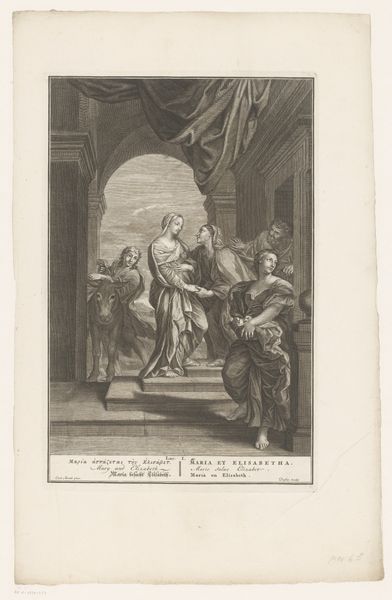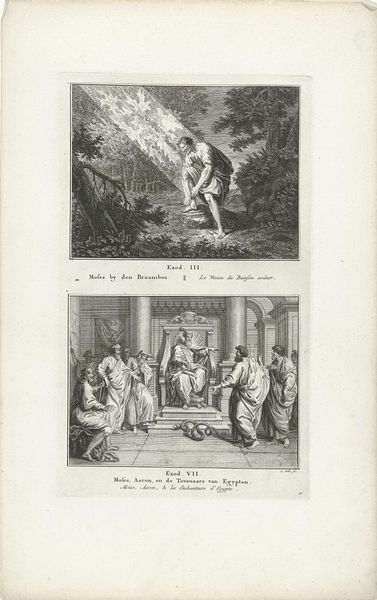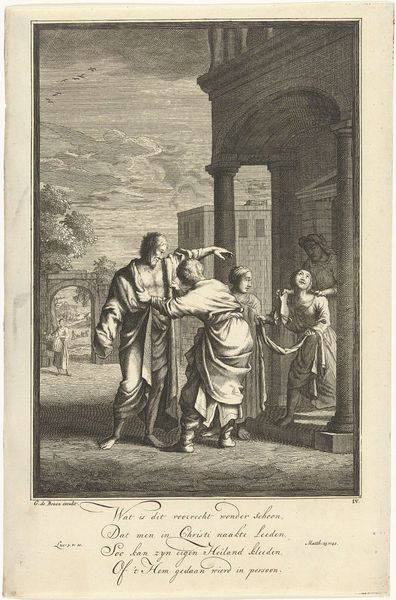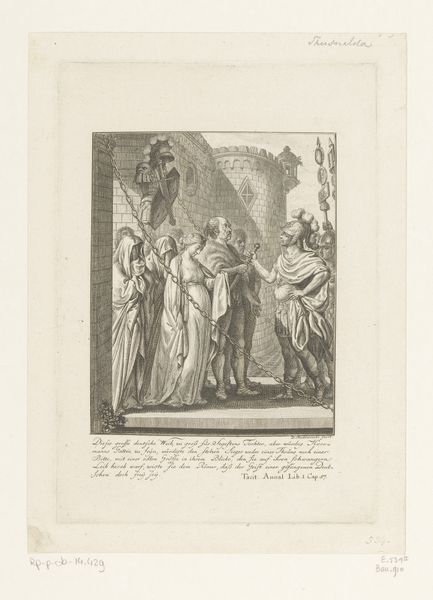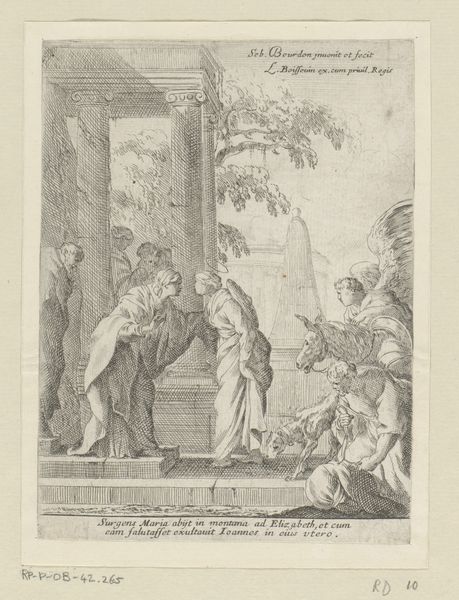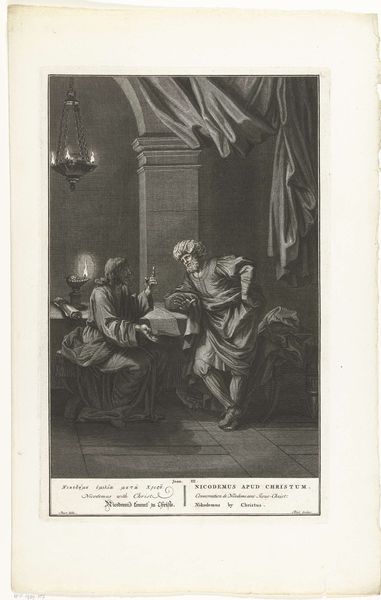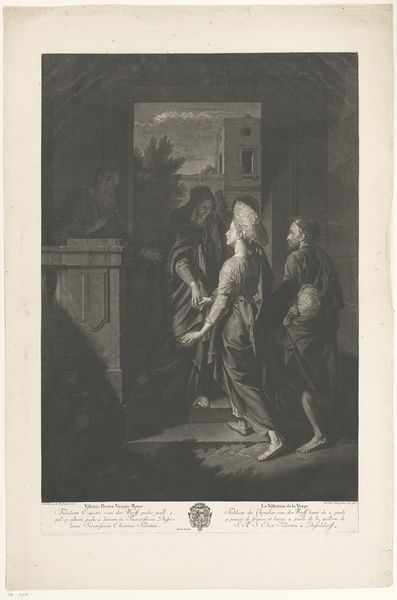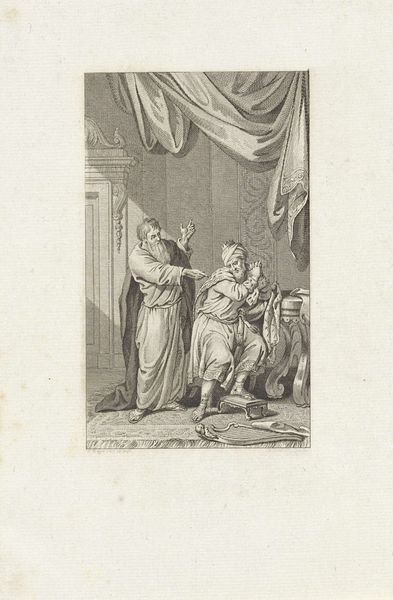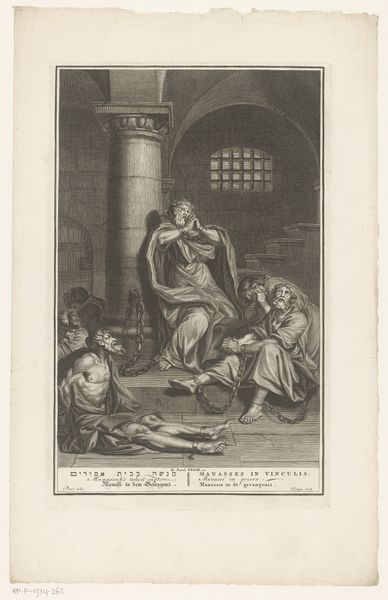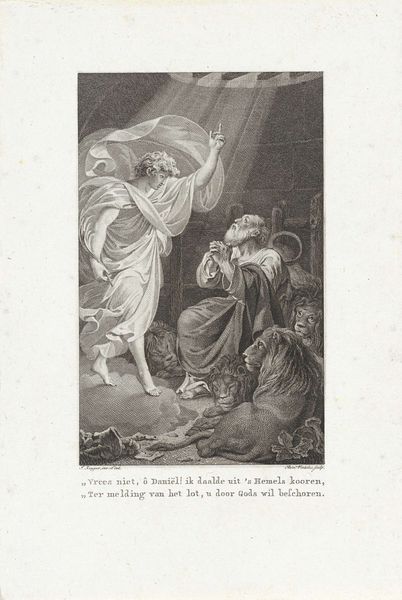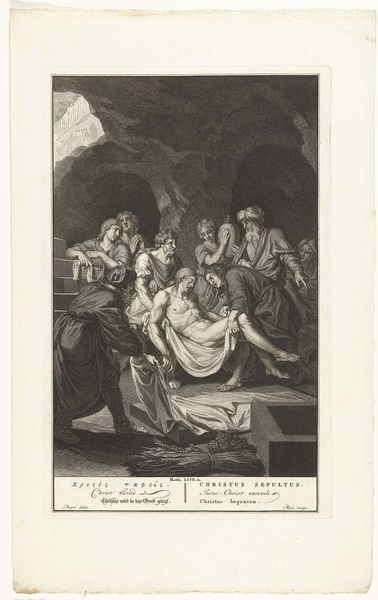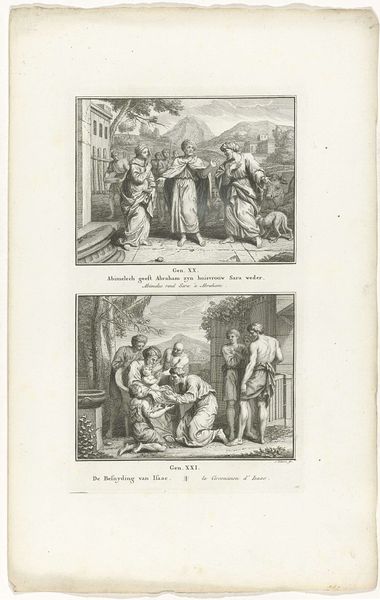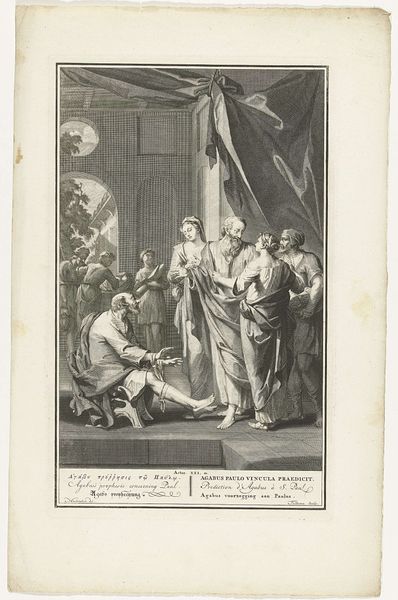
engraving
#
narrative-art
#
baroque
#
history-painting
#
engraving
Dimensions: width 224 mm, height 351 mm
Copyright: Rijks Museum: Open Domain
Editor: Here we have Gilliam van der Gouwen's engraving, "Christus en de Emmaüsgangers bij de herberg," from 1728, housed in the Rijksmuseum. The sharp contrast between light and shadow makes it dramatic, almost theatrical. It depicts a biblical scene of Christ with two disciples, yet the details feel intimate. What's your read on this work, especially given its historical context? Curator: Intimate is a wonderful word here! Doesn't it almost feel like stumbling upon a clandestine encounter? That stark chiaroscuro certainly amps up the drama, common in Baroque art, reflecting the era’s heightened emotionality. But look closer. The architectural setting – almost like a stage set, as you said - and the expressions... Notice how Christ, pointing outwards, seems to be challenging their understanding even as they find refuge. I wonder, how does it sit with you knowing this print circulated widely, acting as a visual aid for understanding scripture? Editor: That’s a powerful point! The wide circulation certainly shifts the focus from intimate observation to a shared understanding of religious doctrine, right? Did the artist have other intentions when engraving? Curator: Perhaps! It’s like a play in print – designed for discussion, for dissection. Consider how printmaking allowed for subtleties that paintings maybe lacked at the time - nuances accessible to a broader audience and not the private wealth of nobles! How does it change the work, knowing it was produced more democratically than the patronage of fine art pieces would suggest? Editor: It adds another layer of complexity and challenges, in the sense that an engraving allowed access to many people to share personal insights! I hadn't considered that accessibility before. Curator: Exactly! It pushes us to look beyond the single image to the context of its creation and distribution.
Comments
No comments
Be the first to comment and join the conversation on the ultimate creative platform.
